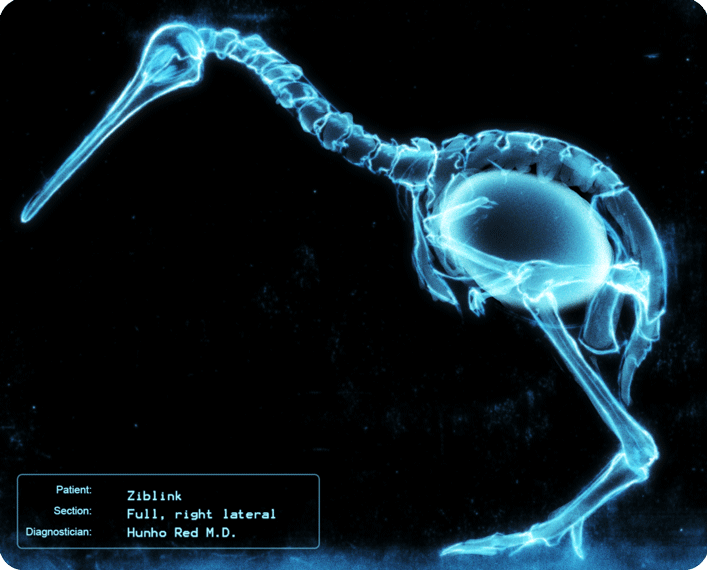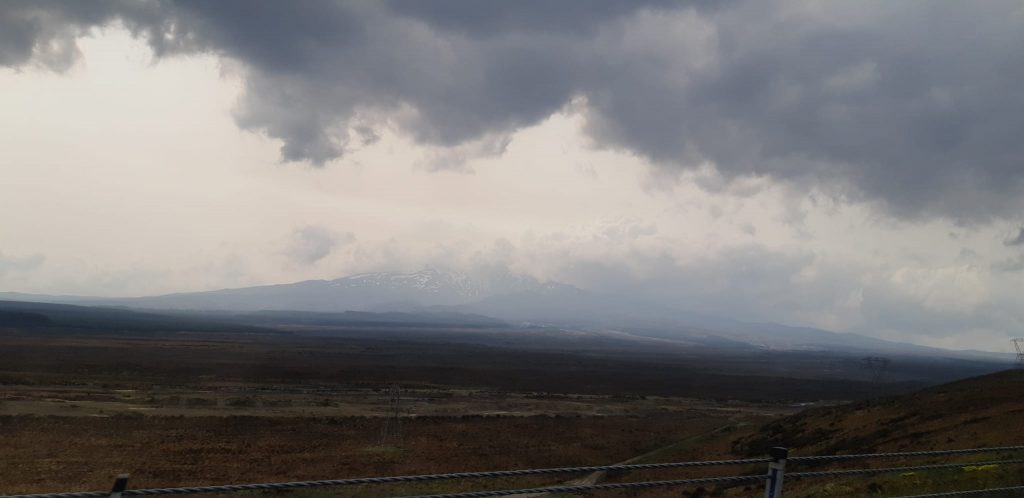The next morning, we left Wellington and headed north. Our destination was Turangi, some 400 km away. The first part of the journey was along the coast, then we reached the countryside around Mount Bruce. It is about 2 hours or 140 km north of Wellington. Mount Bruce is a part of the Tararua range which covers, 3168 km². The highest peak is the Mitre Peak, which is 1570 m above sea level, but it was engulfed by clouds. However, you can visit a Kiwi breeding station not far from here.
We stopped there. It is a wildlife centre with a mission to save New Zealand birds and their speciality is their kiwi breeding centre. They have baby kiwis, which they let grow until they can be let loose in nature. The Kiwi eggs are very big, just a little smaller than the Emu egg in Australia. Looking at the picture, the egg takes up an enormous amount of space in the female body.

The “star” of the centre is an albino kiwi. It lives in a room with infra-red light, if you are lucky, and you are there for feeding time, you can see it. The other star is the Kokako Bird. If you speak with it, it sometimes answers you with “kookakoo”.
The birds from New Zealand were threatened by the arrival of the colonials. They brought with them rats, cats and dogs and began breeding rabbits. In turn, with the good quality grass, the rabbit population exploded and so stoats were introduced to exterminate the rabbits. Opossums were also introduced for their fur. As they multiplied, they too have become predators of Kiwis and other birds. Many birds in New Zealand do not fly, so they are easy prey to any predators. This reduced their numbers enormously.
The birds are given Maori names. For example, the Kakariki, which are little green parakeets, are collectively known by their te reo Māori name. “kākāriki” means “green” (and further breaks down to ‘kākā’ meaning ‘parrot’ and ‘riki’ meaning ‘small’). It is the “small green parrot”
The South Island Takahe is also on the endangered list. There are only 300 birds left in the country.
There are also eels to see at this centre. These are the tuna long fin eel, which is much bigger than their European cousins. They can live for up to 80 years. The females can grow to a length of 2 metres and weigh up to 40 kg.
And, of course, you can meet our friends the Weka.
In the reptile section, you can visit the Tuatara. These are descendants from the age of the dinosaurs, some 220 million years ago. Today, they live on about 37 islands around the country.
The Centre is well worth visiting. We spent the entire morning exploring everything on offer, but it is not difficult to spend a day there. Then you can also watch the animals being fed, which is very exciting for children.
For lunch, we drove to Mangatainoka to the Tui Brewery.
They offer you a “taster”, a rack with 5 small tasting glasses. For lunch, we could order the beer we preferred. A little beer degustation. New Zealand beers are excellent because of their crystal-clear water.
After lunch, we stopped at Taihape. It claims to be the gumboot capital of the world. You can also go to the gumboot throwing lane and train for the next competition. (March 2022). Perhaps it will be included in Paris 2024. We had a lot of fun, we amused ourselves enormously. But it is also a serious sport. Since 1985, Taihape has hosted an “annual gumboot day”. It was organised by local business people to capitalise on the rural image of the town. The area around the town is very agricultural. You can also admire the large gumboot made from corrugated iron and sculptured by New Zealand artist Jeff Thomson.
We continued to drive on a “desert road” to the Tongariro National Park It is here where one enters a volcanic area. It is New Zealand’s oldest national park.

We arrived in Turangi for our accommodation. We stayed two days here. We had tickets to go on the trail. But the authorities sent us a message saying that the trail was closed due to heavy rains, it was too dangerous. We were reimbursed because we couldn’t stay a day longer, i.e. a third day.)

The Park was beautiful. We spent an ideal day just covering just a few kilometres, just to admire the spectacular views. There is also a lake where we saw some black swans, a cormorant was sitting on a rock.
Turangi is on the southwest shore of Lake Taupo. Which I will describe in the next chapter.